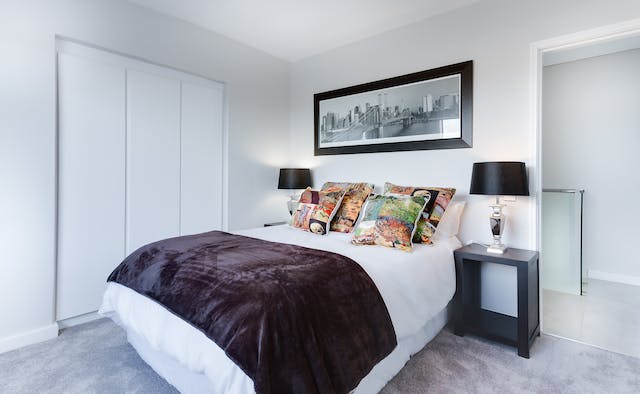The bedroom is more than just a place to sleep; it’s a retreat, a special place where you may relax in luxury. Aesthetics are only one part of the creative process when designing a bedroom; other factors include practicality, personal taste, and the significance of creating a relaxing environment. From the floor plan and paint colors to the furniture and accessories, this detailed guide will show you how to create the perfect bedroom.
Establishing Your Personality and Choices:
a. Values Regarding Beauty:
Finding your own unique style is the first step in developing a design. Knowing your own personal style preferences—be they more conventional, contemporary, eclectic, or minimalist—is the first step in creating a harmonious and aesthetically pleasing bedroom.
b. Scheme of Colors:
To create the mood you want, use colors that speak to you. A tranquil atmosphere may be achieved with soft, neutral tones, while a splash of vibrant color can liven things up a little. When you’re choosing your color scheme, keep in mind the emotional and mental effects of each hue.
Maximizing Space in the Bedroom:
a. Layout of the Bed:
Because of its central role, the bed must be carefully positioned in the bedroom. Think about aligning the bed with the longest wall to create symmetry and promote optimum flow. For a more comfortable night’s sleep, it’s best to keep the bed away from windows.
b. Arranging Furniture:
Make the most of the available space and functionalities by arranging the furniture in a balanced manner. A well-planned and harmonious bedroom layout includes nightstands on each side of the bed, a dresser or wardrobe, and, if there is enough room, a sitting area.
c. Think About How Traffic Moves:
You should be able to walk easily around the room. To keep things flowing smoothly and not make the space seem claustrophobic, don’t put too much furniture in the way of walkways.
Making an Informed Furniture Purchase:
a. Choosing a Bed:
Pick a bed that reflects your own style while also catering to your needs for maximum comfort; after all, it serves as the room’s focal point. Give equal weight to design and function when selecting a bed, whether it’s a traditional four-poster, an elegant platform, or a comfortable upholstered frame.
b. Solutions for Storage:
Invest in space-saving storage solutions to keep your home neat. To keep one’s clothing, linens, and other personal belongings neat and organized, one needs a wardrobe, dresser, or space beneath the bed. For bedrooms that are on the smaller side, think about installing built-in storage options.
c. Varieties of Seating:
A chaise lounge or a plush armchair would be perfect additions to any room that permits them. This creates a specific area where you may decompress at the end of the day, whether that’s by reading, relaxing, or doing nothing at all.
Making Your Space More Relaxing:
a. Sheets and Comforters:
To make your bedroom more inviting and beautiful, invest in high-quality linens and bedding. Choose materials that are soft on the skin and go well with the color palette. Warmth and texture may be achieved by layering with decorative pillows and throw blankets.
b. Glazing Solutions:
Find functional window coverings that also complement your decor. While sheer curtains let in natural light throughout the day, blackout curtains block out light and help you have a better night’s sleep. Think about how drapes may help control the temperature by acting as an insulator.
c. Low-Key Lighting:
The ambiance is created in large part by the lighting. Bedside lights or wall sconces, which are adjustable and provide mild illumination, should be installed. To adjust the brightness according to your needs and emotions, you could want to install dimmer switches.
d. Components of Nature:
To make your bedroom more relaxing, try incorporating some natural elements into the decor. Incorporating natural fiber rugs, houseplants, or wooden furniture into your space may provide a feeling of calm by adding texture and an element of nature.
Reducing Technology Use and Improving Sleep:
a. Cut Down on Electronics:
Make your bedroom a haven by putting away all of your technological gadgets. If you want to improve the quality of your sleep, you can try limiting your screen usage in the hours leading up to bedtime or even making your bedroom a tech-free zone.
b. For the Best Night’s Rest:
Be mindful of what makes your bedroom a good place to sleep. Get a decent night’s rest by furnishing your bedroom with a supportive mattress and pillows, regulating the temperature, and blocking out background noise.
Conclusion
Aesthetics, utility, and health must all be carefully considered in designing a dream bedroom. Make your bedroom a sanctuary for rest and rejuvenation by taking your unique style into account, optimizing the layout, choosing the right furniture, making it cozy, adding your own décor, and making sure you practice good sleep hygiene. Never forget that your bedroom is a mirror of who you are; so, it should be a place that evokes positive emotions in you whenever you step foot in it.

